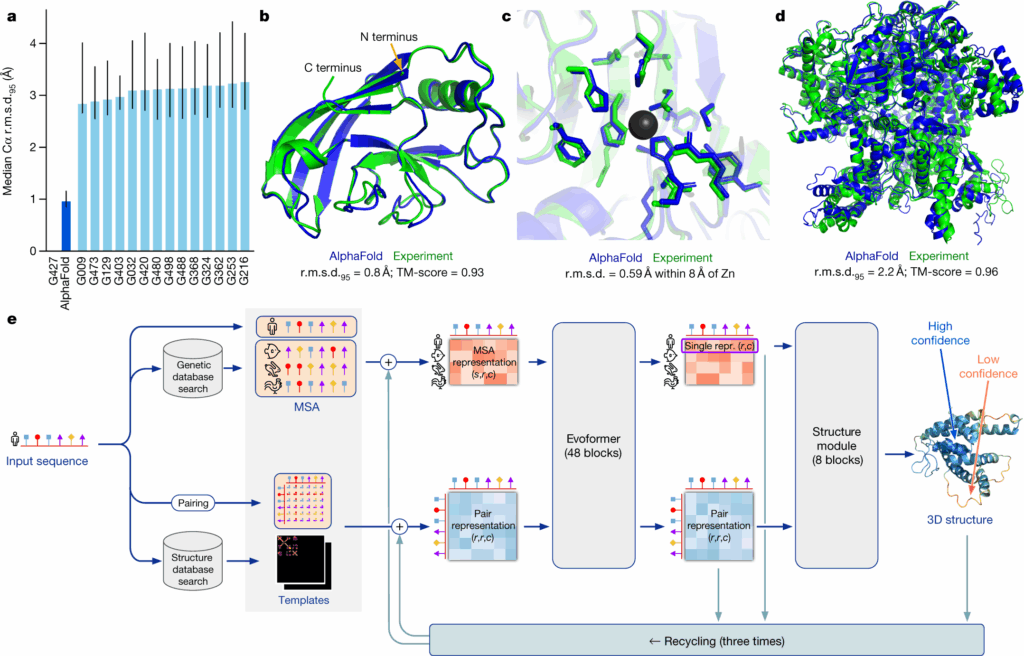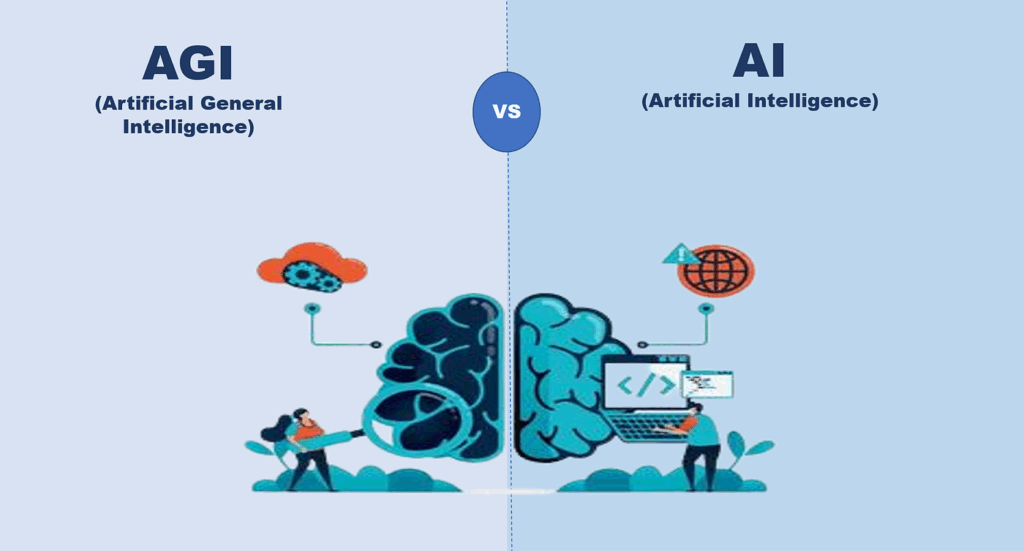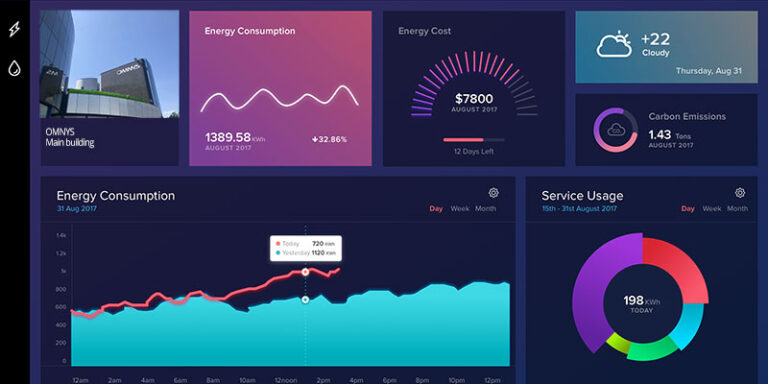The Curious Case of Artificial General Intelligence (AGI)
Let’s kick things off with a big ol’ brainy question: what if machines could think like us, not just crunch numbers or recognize cats in photos, but think? That’s the wild frontier of algorithmic artificial general intelligence (AGI). It’s like moving from a calculator to a curious toddler who’s read every Wikipedia article twice.
And when we throw in the term algorithmic, we’re talking about AGI that’s not just smart by brute force, but smart because of its structure, a refined, methodical genius. DeepMind, that brilliant brainchild of Google, is knee-deep in this stuff.
DeepMind The Nerd Squad Building the Future
Imagine a lab filled with PhDs, whiteboards covered in Greek symbols, and more coffee than a startup incubator. That’s DeepMind. Founded in 2010 and gobbled up by Google in 2014, this London-based powerhouse made headlines when its AI, AlphaGo, obliterated world champions at the ancient game of Go.
But AGI? That’s their true holy grail. While most AI systems are narrow, now great at one task but useless at others, DeepMind aims to build a mind that can flex between tasks like a human. Learn chess today, play violin tomorrow, write poetry next week.
Why “Algorithmic” AGI Matters
Okay, so what’s with the “algorithmic” part? Think of it like cooking. You can either memorize a bunch of recipes (narrow AI) or learn the principles of flavor, heat, and texture so you can whip up anything from scratch (algorithmic AGI).
DeepMind wants AI to understand the processes behind intelligence. That means learning how to learn. It’s not enough to give an AI a billion examples. You teach it to spot patterns and draw conclusions, even from just a few examples.
Meet the Building Blocks: Reinforcement Learning and More
Let’s break down the cool tech toys powering algorithmic AGI:
Reinforcement Learning (RL)
Imagine you’re training a dog with treats. That’s RL. The AI learns by trial and error, getting rewarded for good actions. DeepMind used this to train AI agents to beat video games and even solve complex protein folding problems.
Neural Networks
Inspired by the human brain, these are layers of ‘neurons’ that process information. DeepMind tweaks these networks so their AI doesn’t just memorize data but understands it.
Meta-Learning
This one’s juicy: learning how to learn. Instead of retraining a new model for each task, one model figures out the tricks of learning and applies them across tasks. Like an AI version of your friend who picks up every new skill in two days.
AlphaFold Not Just Games Anymore

People thought DeepMind was just the Go-playing champ. Then came AlphaFold, a project that solved the 50-year-old mystery of protein folding. That’s right, this algorithm can predict how proteins twist and fold, which has massive implications for medicine, vaccines, and more.
This wasn’t just a party trick. It showed that algorithmic AGI isn’t a science-fiction dream. It’s already transforming science.
The Brains Behind the Algorithms

DeepMind is a magnet for talent. They’ve got neuroscientists, mathematicians, and coders working side by side. Why? Because building AGI isn’t just a tech problem, it’s about understanding intelligence itself.
Some notable minds:
- Demis Hassabis (CEO) – chess prodigy, game designer, neuroscientist
- Shane Legg – co-founder who wrote his PhD on AGI
- Koray Kavukcuoglu – lead architect of many deep learning models
These are the folks leading the charge on algorithmic intelligence.
Ethical Considerations We Creating Frankenstein?

Alright, time for a reality check. With great power comes great risk, right? AGI that can think like humans might also outthink humans. DeepMind has an internal ethics board and regularly publishes on AI safety, bias mitigation, and transparency.
Still, questions loom:
- Who controls AGI?
- Can it be weaponized?
- Will it take our jobs or make us obsolete?
It’s a real balancing act between innovation and responsibility.
How Close Are We to Real AGI?
Spoiler: not tomorrow, but maybe not 100 years either. DeepMind is inching closer. Projects like Gato (a single model that can play Atari, talk, and even control robots) are promising signs.
But true AGI means robust reasoning, memory, adaptation, and real-world decision-making. We’re in the toddler phase of a very smart AI baby.
What Would AGI Mean for Us?
Let your imagination go wild:
- Healthcare: AI doctors diagnosing rare diseases
- Education: Personalized tutors for every student
- Climate: AI models predicting and mitigating disasters
And yes, some jobs may go extinct, but new ones (like AI psychologists?) might emerge. It’s the next industrial revolution, with a digital twist.
How You Can Get Involved

Not a coder? No problem. You can still ride the AGI wave:
- Take free AI courses (DeepMind, Coursera, MIT)
- Join discussions on AI ethics and policy
- Support open-source AI communities
Whether you’re an artist, teacher, or barista, AGI will touch your world. Staying informed is the first step.
Conclusion: The Algorithmic Future Awaits
Artificial General Intelligence isn’t just some lab experiment locked in a server room. With players like DeepMind pushing the boundaries, AGI is creeping into reality. What sets algorithmic AGI apart is its quest not just to mimic intelligence but to understand it.
DeepMind’s journey is like watching humanity build a digital brain from scratch, one algorithm at a time. It’s part science, part philosophy, and a whole lot of future.
So next time you hear someone say, “AI’s just hype,” you can confidently reply, “Wait till AGI shows up with a PhD in everything.”
Frequently Asked Questions (FAQ)
1. What is algorithmic artificial general intelligence?
It’s a type of AGI designed to understand the process of intelligence using algorithms that mimic how humans learn and adapt.
2. How is DeepMind contributing to AGI?
Through groundbreaking projects like AlphaGo, AlphaFold, and Gato, DeepMind is building systems that combine flexibility, learning, and reasoning.
3. Are we close to achieving AGI?
We’re making steady progress. While true AGI isn’t here yet, models that generalize across tasks are emerging.
4. What are the risks of AGI?
Risks include misuse, lack of transparency, and potential displacement of jobs. Ethical AI development is crucial.
5. Can I work with or learn more about AGI?
Absolutely! Many platforms offer free resources. DeepMind, OpenAI, and universities have open research and tutorials for learners of all levels.






